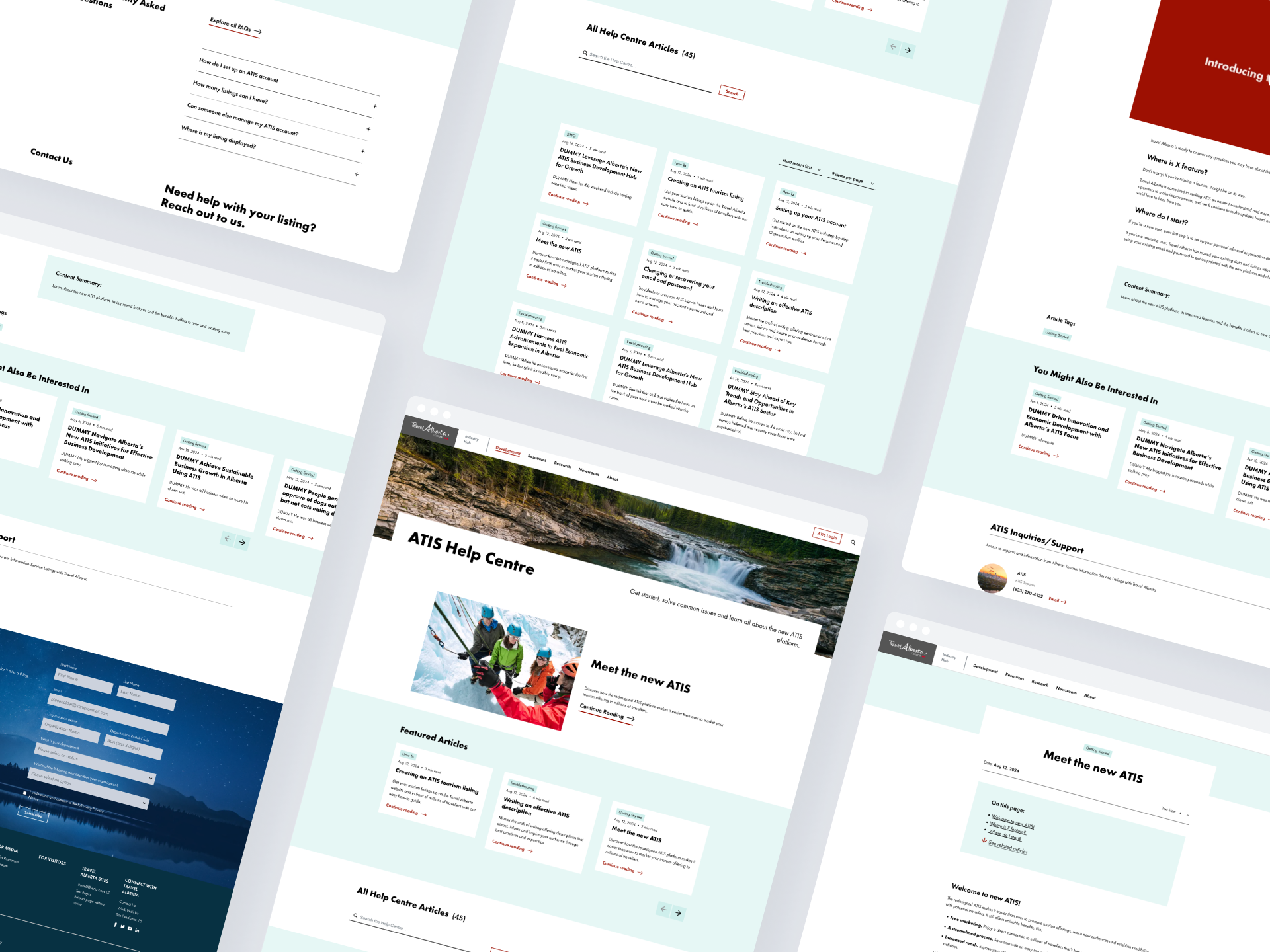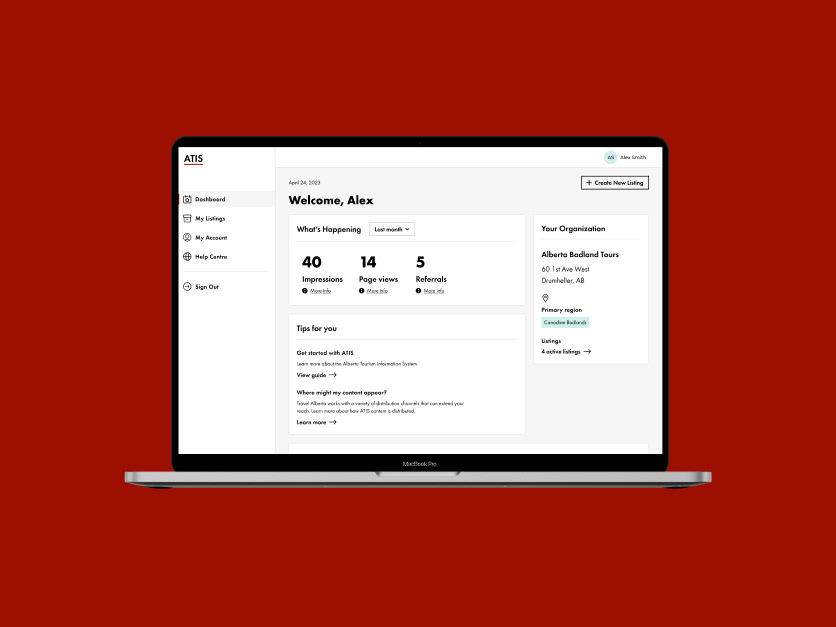OVERVIEW
Ridge North America (RNA) is an integrated development company based in British Columbia. They specialize in luxury destination development in growing tourist regions.
RNA needed a new website that clearly conveyed its value to potential investors, buyers, and guests. The new site needed to establish RNA as industry experts, speak to their diverse audiences and showcase their new brand identity.
The goal was to develop a new site architecture and design a compelling digital experience that highlights the company’s expertise while addressing the unique needs of each audience. This redesign aimed to increase awareness of RNA’s business and directly address the concerns of multiple audience types.
CLIENT
Ridge North America
TIMELINE
2 months
ROLE
User Experience Design
Discovery
Audience Definition
To better understand website users' needs and identify different audience types, we conducted a discovery workshop. This workshop allowed us to better understand our target audience and enabled us to quickly create a proto-persona as a foundation for understanding user needs. These proto-personas then guided the development of the website’s information architecture.
Information Architecture
During the discovery workshop, we collaboratively created a draft sitemap with the client, ensuring it aligned with both the proto-personas’ needs and business objectives.
I then worked to perform an audit on the existing site by assessing and categorizing existing content and determining what to keep, update, or remove. This process resulted in a new content structure and site map to enhance user experience and address business needs.
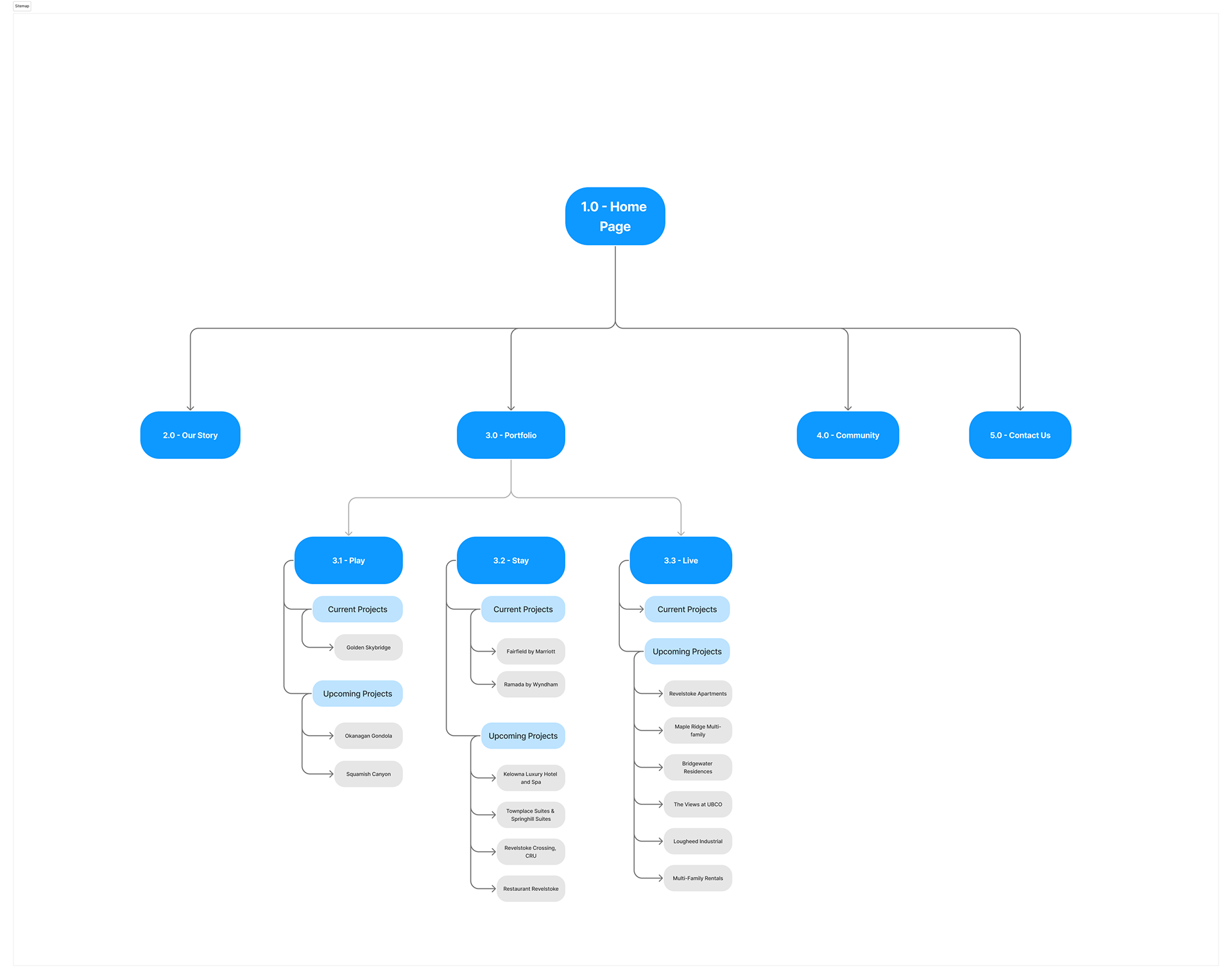
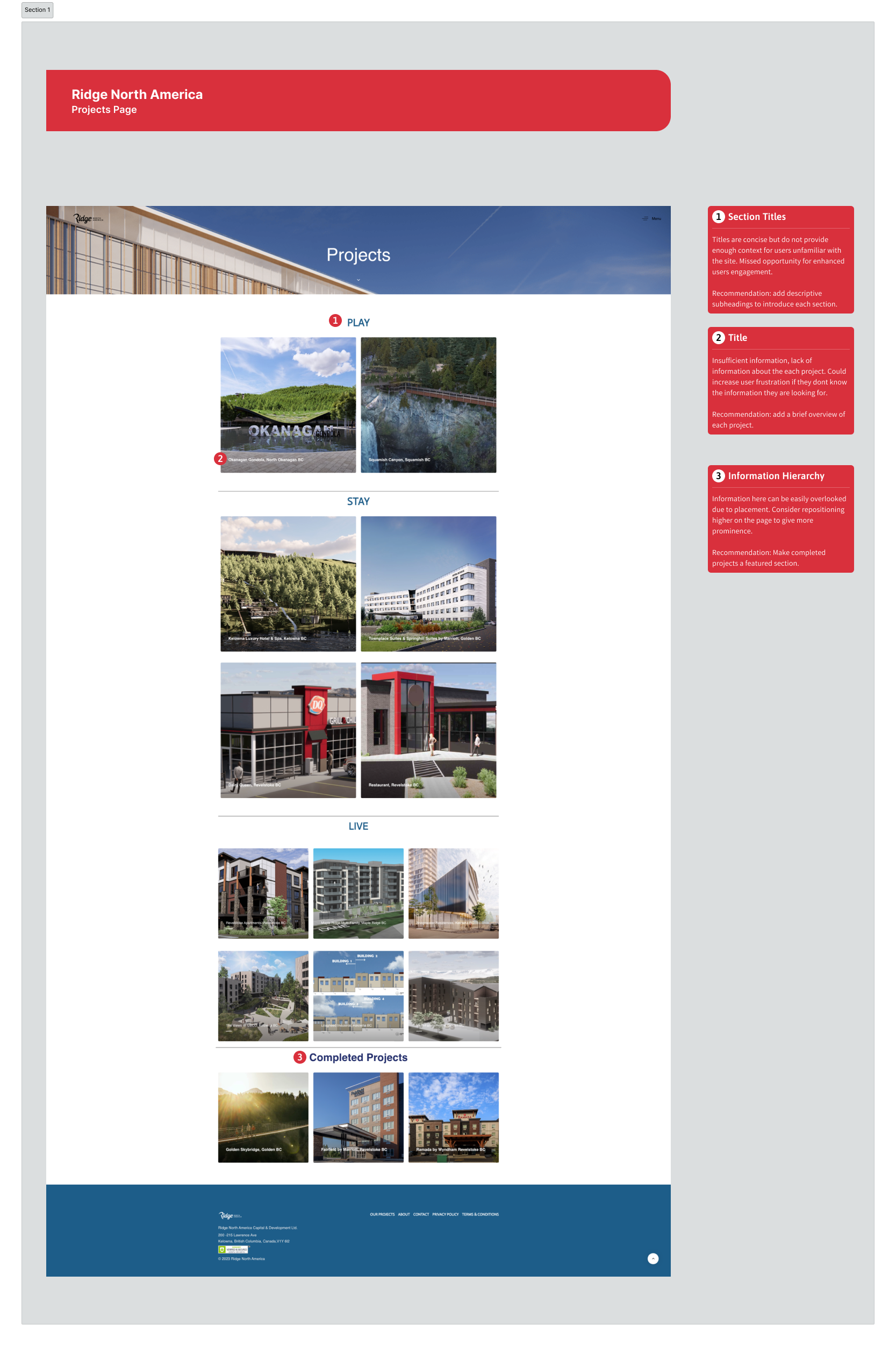
Research
Competitor Review
Stakeholders identified their key competitors, which I used to benchmark the functionality and features of the new site. I compared features, content, and design elements across four competitor sites, identifying trends and potential features to implement in the new site design.
Wireframes
During this process, I focused on maintaining consistency and building versatile, reusable component blocks to maximize Squarespace’s capabilities and ensure the client could easily manage the new site after launch. After one feedback cycle from the client, the wireframes were sent for development.

Low-fidelity wireframes
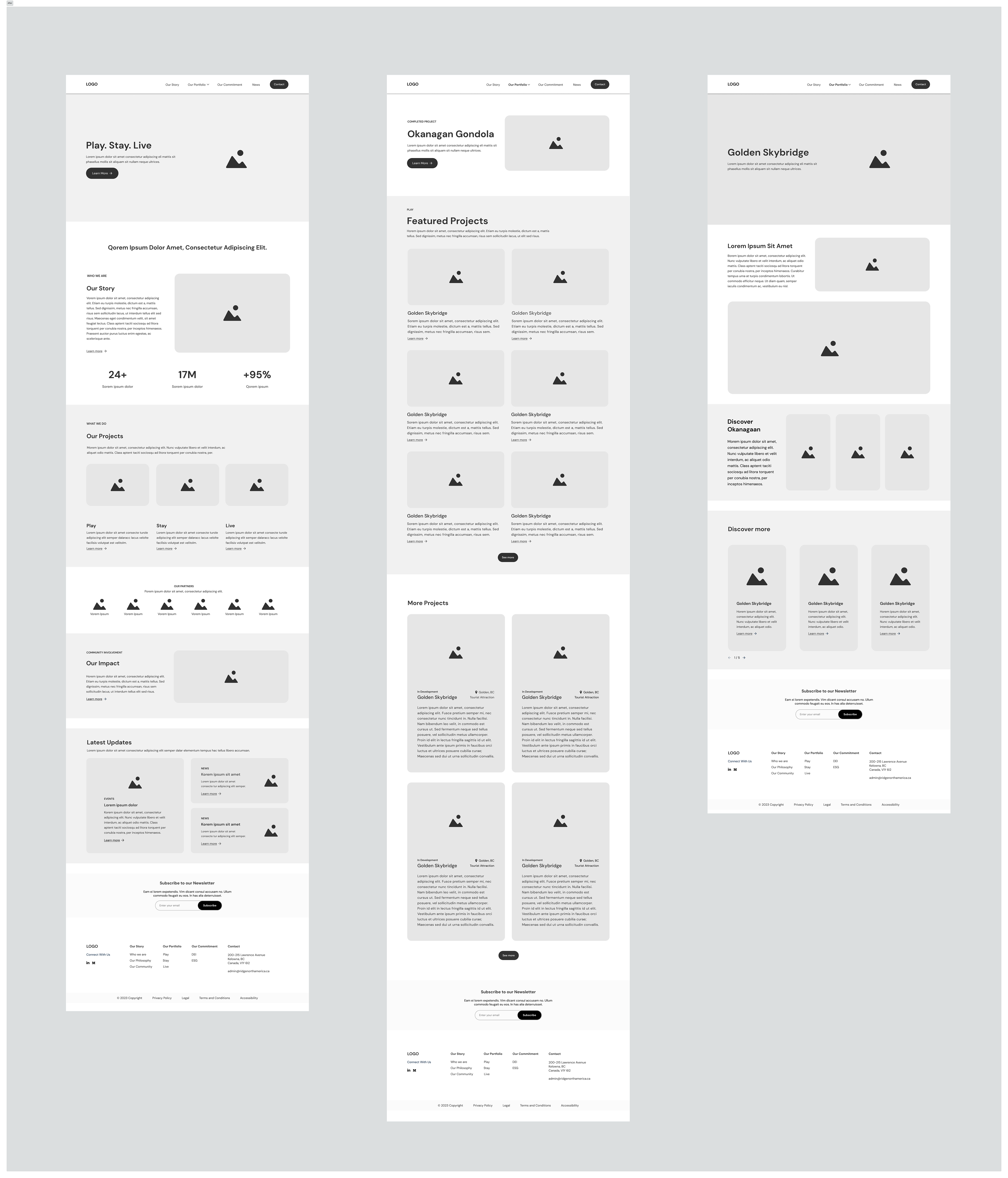
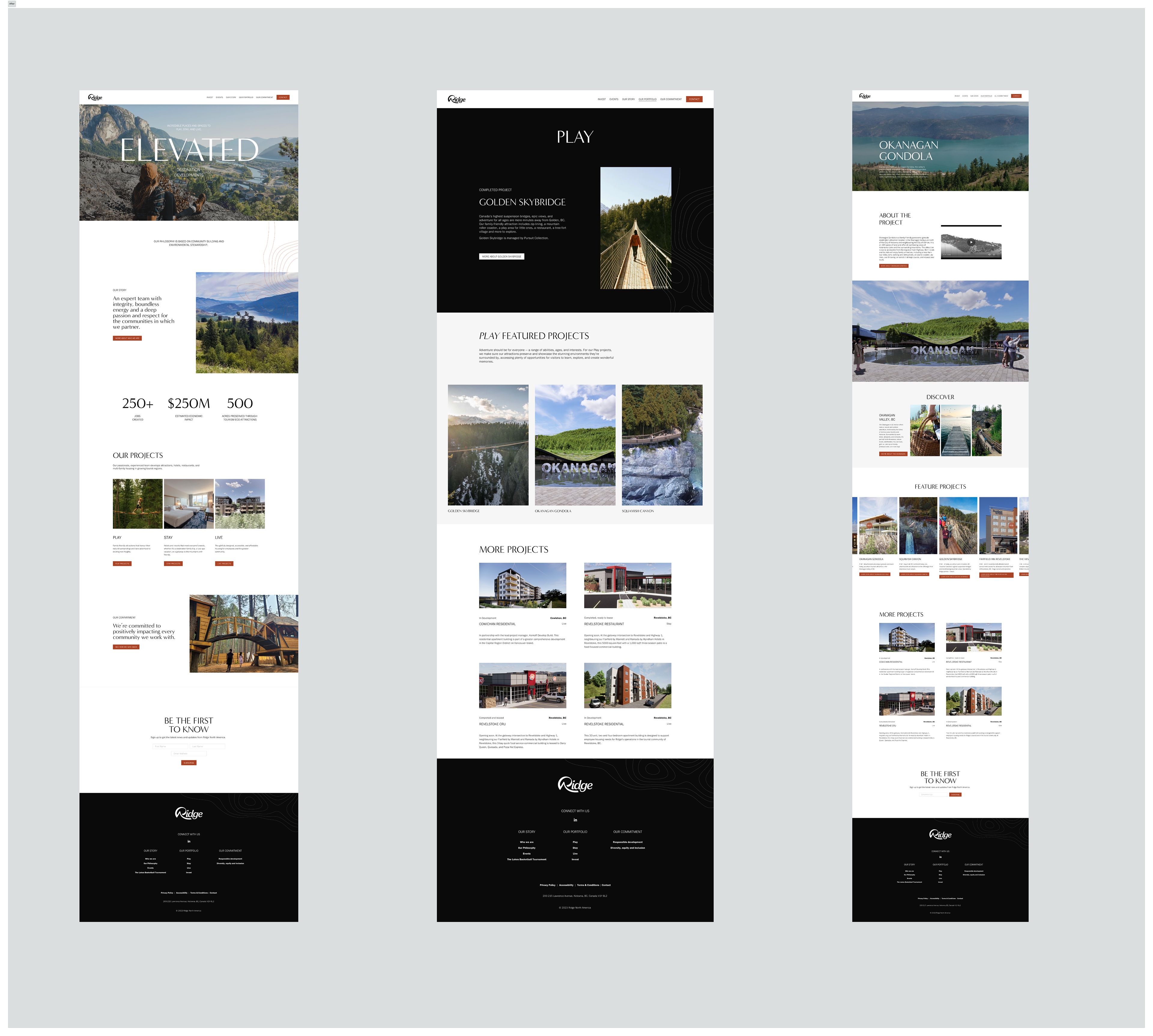
Results
Impact
The low-fidelity wireframe validated my design decisions with stakeholders by building on the shared understanding established during the discovery workshop. This approach helped to streamline the approval process and ensured a smooth handoff to the development team for implementation.
The newly redesigned website featured tailored content for different audiences and an improved site architecture, making it easy for users to find and navigate the information they need. It showcases their expertise, while reinforcing their brand and value proposition.
Learnings
- Early collaboration with developers: Engaging with developers early on is crucial to understanding technical constraints and feasibility. I didn’t check early enough whether some of the functionalities I initially designed could be supported on Squarespace, which led to an additional review and feedback cycle. In the future, I would work closely with developers to align on platform capabilities from the outset.
- Early collaboration with developers: Engaging with developers early on is crucial to understanding technical constraints and feasibility. I didn’t check early enough whether some of the functionalities I initially designed could be supported on Squarespace, which led to an additional review and feedback cycle. In the future, I would work closely with developers to align on platform capabilities from the outset.
- Testing and validation: I would have liked to conduct further testing to validate the proto-personas developed during the discovery phase. Ideally, I’d recommend conducting user interviews with potential users, business partners, and internal stakeholders. This testing would ensure that design solutions accurately align with real user expectations and effectively address their needs.
